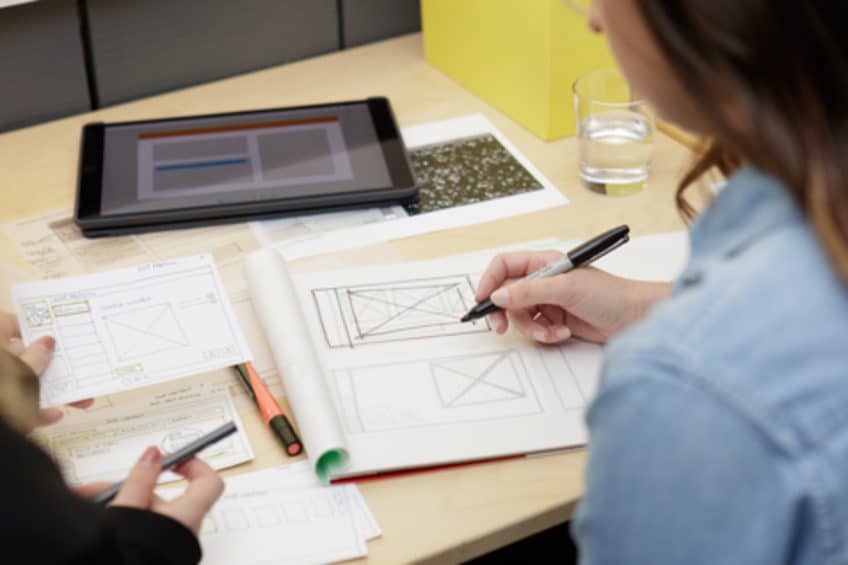By Maureen Mullins, UX/UI Design
To the UX/UI Designers at HS Design, experience design is where people meet products. At HSD, we work to streamline experiences by reducing cognitive load, minimizing tasks, and promoting desired behaviors. For digital user interfaces on medical devices, on-screen content can often be complex, overwhelming, and difficult to process. Here are the top 10 ways our team promotes the quick and effective use of digital interfaces through design:
1. We Establish Hierarchy
Hierarchy is critical to any good user interface. Our designers consider user needs and goals to decide what information is primary, secondary, and tertiary on a display. By defining this key information, our designers control what users see first, visually inform them what they are expected to do, and clearly depict how they are expected to perform the next step.
2. We Organize Screen Content
Once a hierarchy is established, our designers begin placing content in a way that is purposeful, clean and organized. By grouping content and information, we enable users to find what they are looking for and accomplish tasks at a faster rate.
3. We Minimize Text
Minimizing on-screen text not only contributes to reducing cognitive load but can eliminate the need for multi-language translations through the use of universal symbols and icons. We phrase prompts, alerts, and messages in a way that can be easily understood by any user, as on-screen text must be simple, clear and direct.
4. We Use Color Carefully
For medical devices, colors carry significant meaning. We always consider the use context to ensure all colors are used appropriately and will be understood. Misuse of colors can quickly lead to a rejected interface and failed product.
5. We Always Prompt the Next Move
Circulating Nurses have too much going on in the Operating Room to spend time learning an interface or searching for a button. At HSD, we believe a successful user interface is one that informs decisions in a timely and efficient manner. Some ways our designer’s prompt user action is through visual diagrams, colored buttons or text, which communicates a command.
6. We Don’t Just Design for the Happy Path
Users will always not use devices as intended for a number of reasons. At HSD, we consider the potential for user error and mitigate these errors with helpful instructions and workaround options to prevent confusion and frustration.
7. We Always Give the User a Way Out
We consider all workflows to ensure the user never hits a dead-end within the interface. When appropriate, the use of “Go Back” or “Home” buttons can help prevent this occurrence.
8. We Consider the User
Who is using the device is almost as important as how it is being used. Our designers start with the user at the beginning of the design process to thoroughly understand their background, goals associated with the product, and specific user needs in order to better design for them.
9. We Consider the Use Environment
A thorough understanding of the use environment is key to designing for the medical space. Certain factors such as viewing distance, screen angle and size should be designed specifically for the environment of use. Will the device live on top of a cart, on a pole? Will it be viewed from 10’ away? These factors will influence the text size, colors, screen content, and overall design of the user interface.
10. We Test with End-Users
By evaluating proposed designs with users, we can ensure the UI will make sense in the intended context of use. By testing at integral parts throughout the process, our design team can make helpful modifications to the UI, pivot if necessary, and ultimately give the user a say in the end design.
Thanks for reading!
